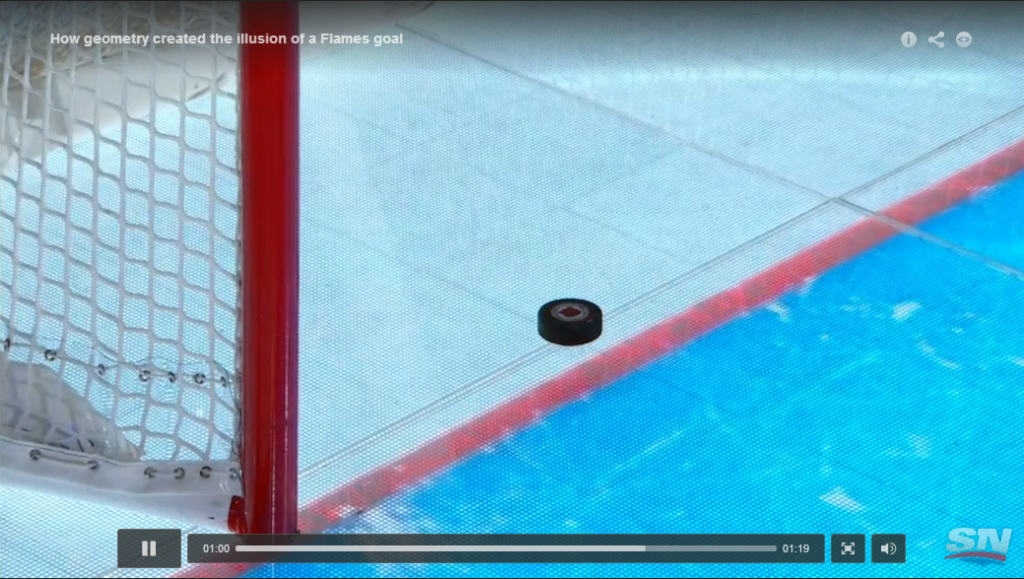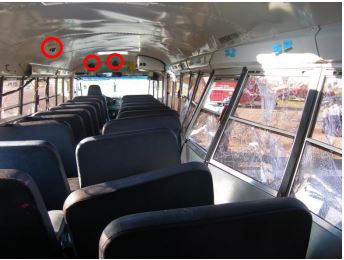Like every good Canadian, I’ve been following the agony and the ecstasy of the 2015 NHL Hockey playoffs. But a no-goal call in game three of the series between the Calgary Flames and the Anaheim Ducks really caught my attention – and that of our hockey nation. That goal reversal, and the surrounding controversy, reminded me of a topic near and dear to our hearts here at Seon: Bus Surveillance.
I know what you’re probably thinking. What could bus surveillance and hockey possibly have in common? Well for those of you who weren’t watching the game, here is a little background:
In the third period of a one-goal game, Anaheim goalie Frederik Andersen made a great save on a shot from Flames’ player Sam Bennett.
…Or did he?
As the play was reviewed it appeared from the straight-ahead camera views that the puck had actually crossed the goal line, before it was stopped by the goalie’s pad. But the overhead camera view proved inconclusive, leading the NHL review team to confirm the call on the ice as no goal. The next several days of hockey commentary involved much discussion on how the lack of appropriate goal camera placement, prevented conclusive evidence of a goal.
A previously little known geometry term – the parallax error – was used to explain the problem. Parallax, according to Wikipedia, ‘is a displacement or difference in the apparent position of an object viewed along two different lines of sight’. Or put more eloquently by the NHL’s Director of Hockey Ops, Colin Campbell: “It’s like a horse race – you can’t stand ten feet ahead of the finish line and determine who won a close race – you have to be standing on the finish line.” (Read details here)
Here is an illustration of the two camera angles taken from SportsNet coverage of the controversy:
Overhead View 
Straight-ahead View
Lucky for the Calgary Flames, this no-goal call didn’t cost them the game, but lack of sufficient camera views in a high stakes situation, such as an NHL playoff game, it very well could have. It highlighted the importance of having the right equipment in the right places.
So bringing us back to bus surveillance, how does this relate? Well public transit and school bus transportation are also ‘high stakes games’. Critical ‘game-changing events’ such as a bus accident or a driver assault can also benefit from the having the right type of equipment in place to properly investigate and assess the situation. Gaps in camera coverage, or cameras that don’t work well in low-light conditions can hamper accident investigations, even if the transportation agency has pro-actively installed surveillance equipment.
The importance of camera placement was emphasized in a recent report on Commercial Vehicle Onboard Video Systems released by the National Transportation Safety Board (NTSB). It discusses two recent crashes, one that involved a school bus equipped with a Seon four-camera system that not only survived the crash, but provided critical evidence in the accident investigation.

The camera footage was used to determine the range of motion and injury in a side-impact collision when vehicle occupants are using safety restraints. It was also valuable in predicting likely injuries in future crash situations. Video analysis and subsequent extensive injury documentation from the Port St. Lucie investigation have been presented to advance biomechanical and pediatric trauma-based research.
So what did we learn from the NHL playoffs about bus surveillance? Not having the right equipment in the right place at the right time can have a major impact in the outcome of your ‘incident’ investigation. And in either case, a lack of suitable evidence can be ‘game-changing’.

Lori Jetha
Marketing Manager, Seon
Lori.Jetha@seon.com


